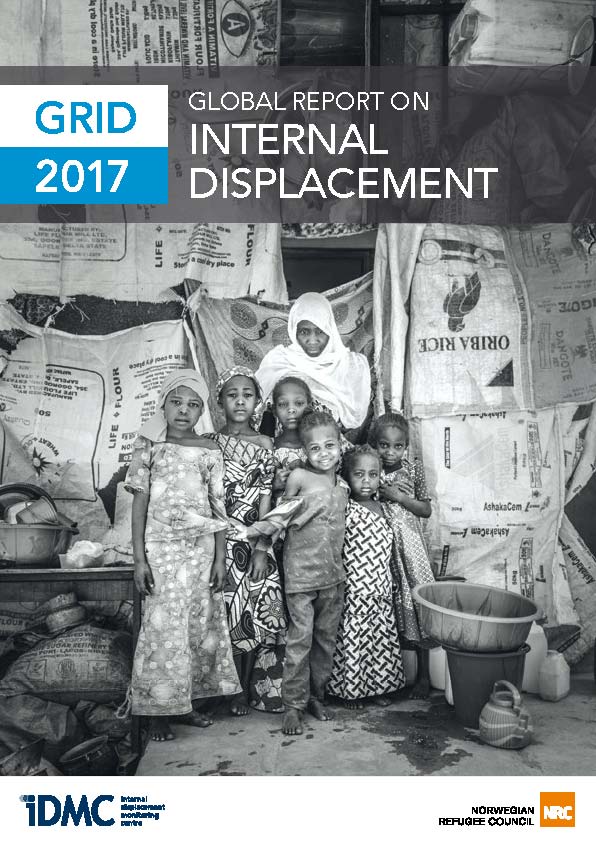Resource information
New displacements by conflict and disasters in 2016.
There were 6.9 million new internal displacements by conflict and violence in 2016. Sub-Saharan Africaovertook the Middle East as the region most affected, with almost one million new displacements in theDemocratic Republic of Congo as a result of violent clashes in the provinces of North Kivu, South Kivu and Kasa.
Significant levels of displacement continued in the Middle East, with Syria, Iraq and Yemen experiencing close to two million new displacements in total during 2016.
New displacements by conflict and violence by World Bank-defined region in 2016.
Countries with most new displacements by conflict and violence in 2016
NEW DISPLACEMENTS - DISASTERS
There were 24.2 million new displacements by disasters in 2016. As in previous years, South and East Asiawere the regions most affected. While China, India and the Philippines have the highest absolute numbers,small island states suffer disproportionately once population size is taken into account.
Countries with the most new displacements by disasters in 2016
Once again, weather-related hazards, in particular floods, were responsible for the majority of all new disaster displacements in 2016.
New displacements by disasters by hazard category, 2008 to 2016
Low and lower middle income countries bear the brunt of internal displacement every year. The majority of new displacements in 2016 took place in high-risk environments characterised by low coping capacity, high levels of socio-economic vulnerability, and high exposure to natural and human made hazards
New displacements by conflict and disasters in 2016, disaggregated by INFORM risk levels in the countries concerned
TOTAL HEADCOUNT
By the end of 2016 there were 40.3 million people living in internal displacement as a result of conflict and violence in the world. This number has nearly doubled since 2000 and has increased sharply over the last five years.
An unknown number of people remain displaced as a result of disasters that occurred in and prior to 2016.
People internally displaced by conflict and violence as of 2016
Refugees and IDPs displaced by conflict and violence, 1990 to 2016
Although there is an obvious link between internal and cross-border displacement, the exact push and pull factors that explain how someone who is an IDP one day can become a refugee, an asylum seeker or aninternational migrant the next are still unclear.
Six of the ten countries that produced the most refugees in 2015 – Afghanistan, Colombia, the Democratic Republic of Congo, South Sudan, Sudan and Syria – were also among the ten with the largest number of IDPs.
Countries with high numbers of IDPs and producing significant refugee flows
Refugees returning to their countries of origin risk becoming internally displaced again if their return is premature, involuntary or unprepared, and if they return to conditions of insecurity and inadequate livelihoods. This was the case in Afghanistan and Somalia in 2016.
Better evidence is needed to improve future responses. We need to understand:
- how many IDPs cross borders
- the factors that determine their onward and cross-border flight
- the circumstances under which they return to their countries of origin.
Overcoming data shortfalls
Reliable data and analysis are central to the achievement of global and regional development and humanitarian policy processes relevant to displacement. IDMC’s data serves as the baseline to measure progress towards these targets, including the former UN Secretary General’s call to “reduce new and protracted internal displacement by 2030” by at least 50 per cent.
The current global baseline is, however, incomplete. IDMC faces recurring problems in painting an accurate picture, including:


